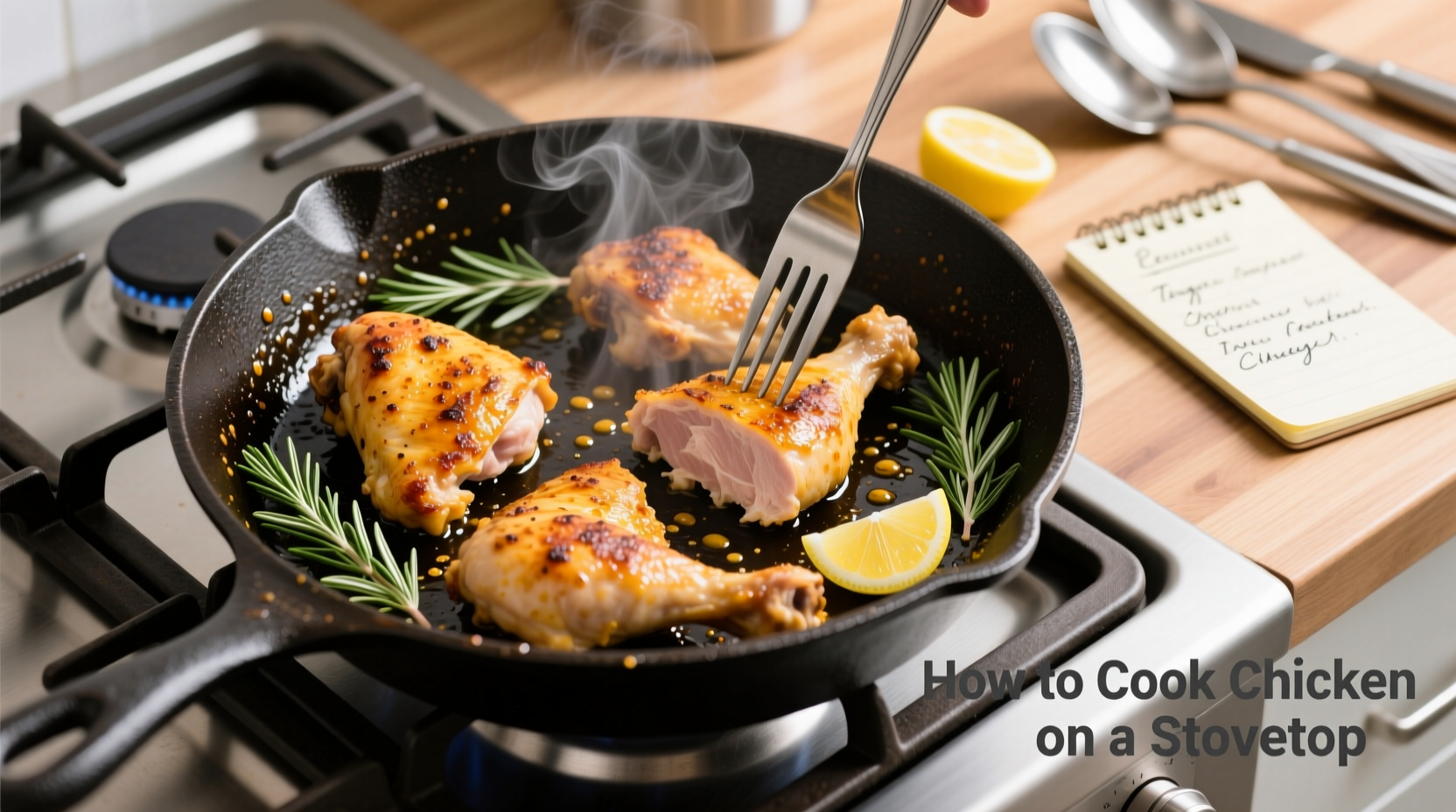Perfectly cooked stovetop chicken requires medium-high heat (350-375°F), 5-7 minutes per side for boneless cuts, and an internal temperature of 165°F. This guide delivers restaurant-quality results with foolproof timing, safety protocols, and flavor-boosting techniques.
Master stovetop chicken cooking in under 20 minutes with techniques professional chefs use daily. Whether you're preparing boneless breasts, thighs, or drumsticks, this guide eliminates guesswork with precise temperature controls, timing charts, and safety protocols verified by USDA standards. You'll learn how to achieve golden-brown exteriors while keeping interiors juicy—no more dry, overcooked chicken.
Essential Tools and Prep Work
Before heating your pan, gather these critical items:
- Heavy-bottomed skillet (cast iron or stainless steel)
- Instant-read thermometer (non-negotiable for food safety)
- Meat mallet or rolling pin for even thickness
- Paper towels for moisture control
Pat chicken dry thoroughly—moisture is the enemy of browning. For boneless breasts, place between parchment paper and gently pound to ¾-inch thickness. Season generously with salt 20 minutes before cooking to enhance flavor penetration.
| Chicken Cut | Thickness | Prep Time | Cook Time |
|---|---|---|---|
| Boneless breast | ¾ inch | 20 min seasoning | 5-7 min/side |
| Bone-in thigh | 1 inch | 15 min seasoning | 6-8 min/side |
| Drumstick | N/A | 10 min seasoning | 10-12 min total |
The Critical Searing Phase
Heat your empty skillet over medium-high heat for 3 minutes until drops of water sizzle violently. Add 1 tablespoon high-smoke point oil (avocado or grapeseed), then place chicken in the pan without crowding. Proper spacing ensures steam escapes, creating the Maillard reaction essential for flavor development.
Pro tip: Resist moving the chicken for the first 3 minutes. Proper searing creates a natural release point—if it sticks, it's not ready to flip. Use tongs to check for golden-brown crust formation before turning.

Temperature Control Secrets
Maintain consistent heat by adjusting burner settings as needed. Boneless cuts typically require 350-375°F surface temperature. For thicker pieces:
- Start skin-side down for bone-in pieces
- Reduce heat to medium after initial sear
- Cover pan for final 2 minutes to render fat
USDA Food Safety and Inspection Service mandates 165°F internal temperature, but remove chicken at 155-160°F to account for 5-10°F carryover cooking during resting. Insert thermometer horizontally into the thickest part, avoiding bone contact.
Avoiding Common Pitfalls
Stovetop chicken fails usually stem from three errors:
- Wet surface - Always pat dry with paper towels before seasoning
- Cold pan start - Proper preheating prevents sticking and ensures even cooking
- Overcrowding - Cook in batches if necessary to maintain pan temperature
Stovetop cooking excels for quick weeknight meals but has limitations. Bone-in, skin-on pieces require 15-20 minutes total cooking time—attempting faster cooking leads to burnt exteriors and raw interiors. For larger batches, finish in a 375°F oven after searing to maintain consistent results.
Flavor Enhancement Techniques
Elevate basic chicken with these chef-recommended methods:
- Add aromatics (garlic, thyme) to oil during last 2 minutes of cooking
- Create pan sauce using fond (browned bits) after removing chicken
- Finish with cold butter swirl for restaurant-quality sheen
Rest cooked chicken 5-7 minutes tented with foil. This allows juices to redistribute, preventing dryness when slicing. For meal prep, cool completely before storing in airtight containers for up to 4 days.
When Stovetop Isn't Ideal
While versatile, stovetop cooking has context boundaries. Avoid this method when:
- Cooking whole chicken (use oven instead)
- Preparing extremely thick cuts (>1.5 inches)
- Need hands-off cooking (try slow cooker for shredded chicken)
For food safety verification, the USDA's FoodKeeper app provides real-time storage guidelines and doneness indicators. Always wash hands and surfaces after handling raw poultry to prevent cross-contamination.











 浙公网安备
33010002000092号
浙公网安备
33010002000092号 浙B2-20120091-4
浙B2-20120091-4